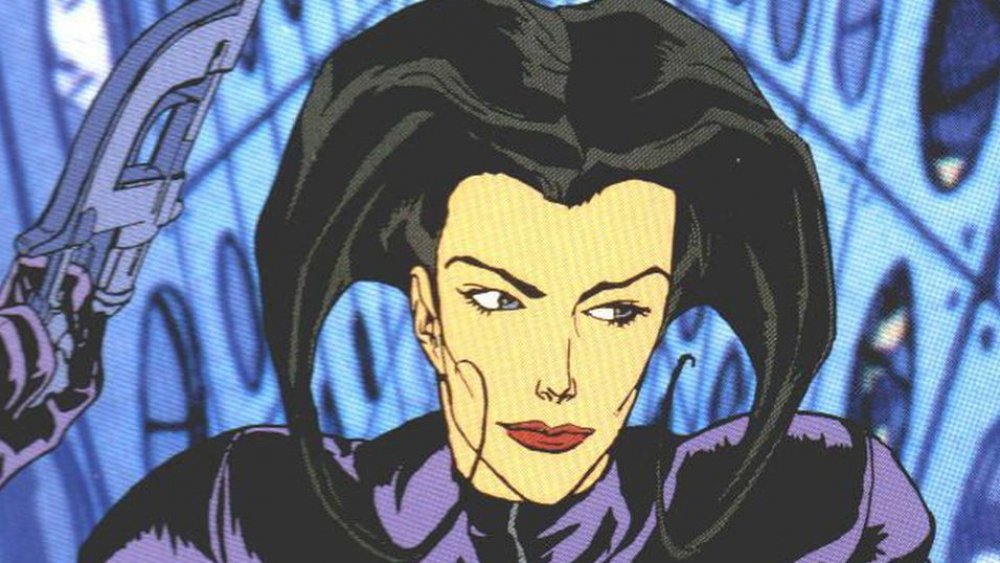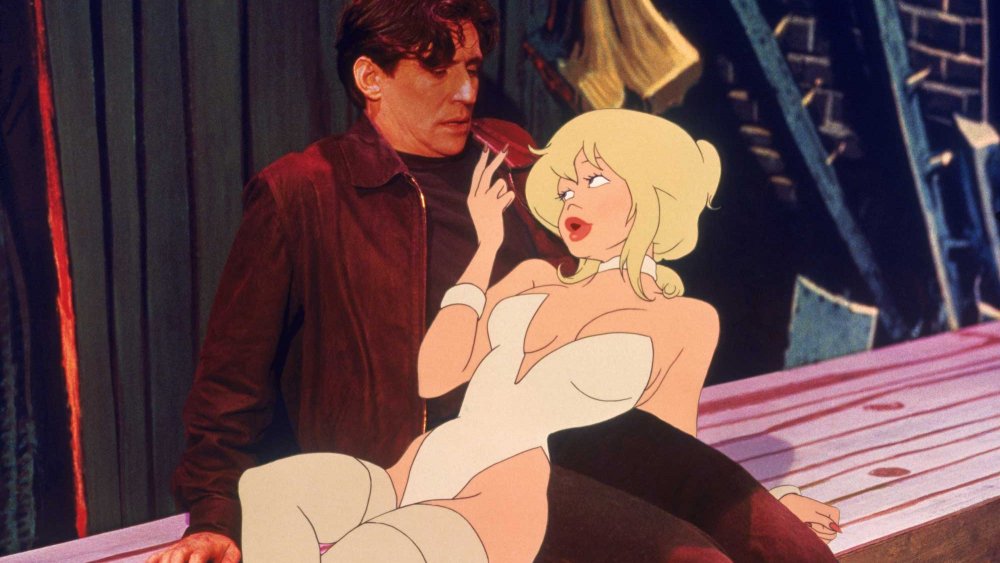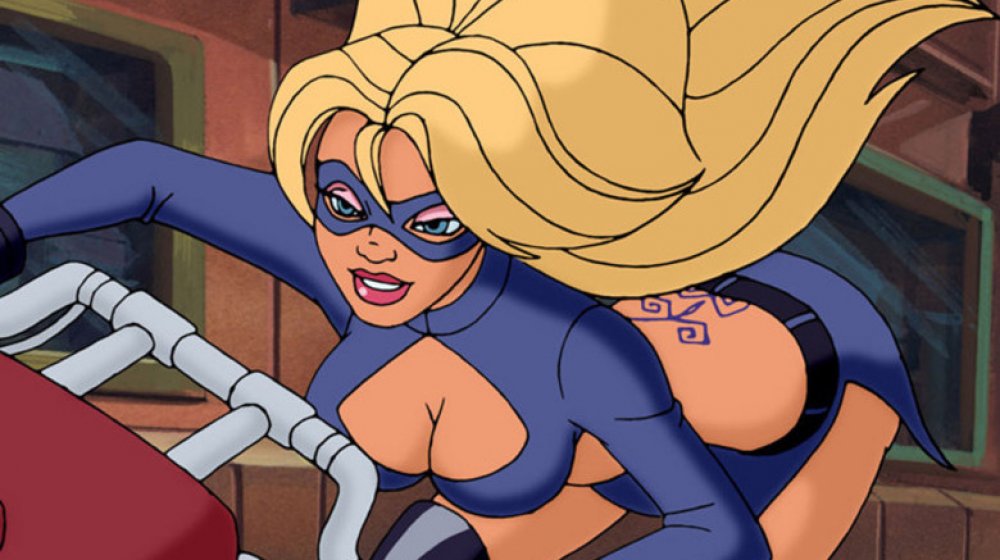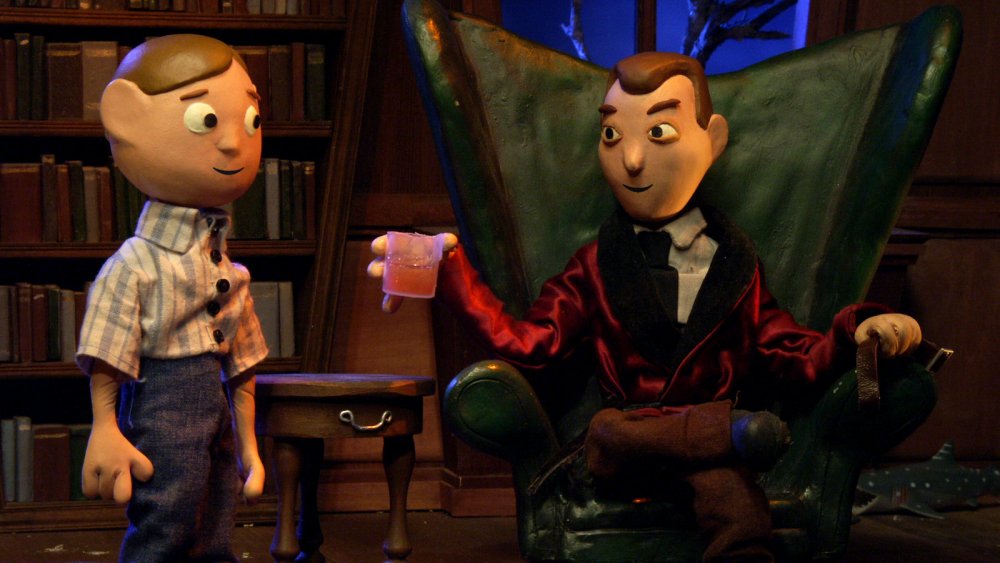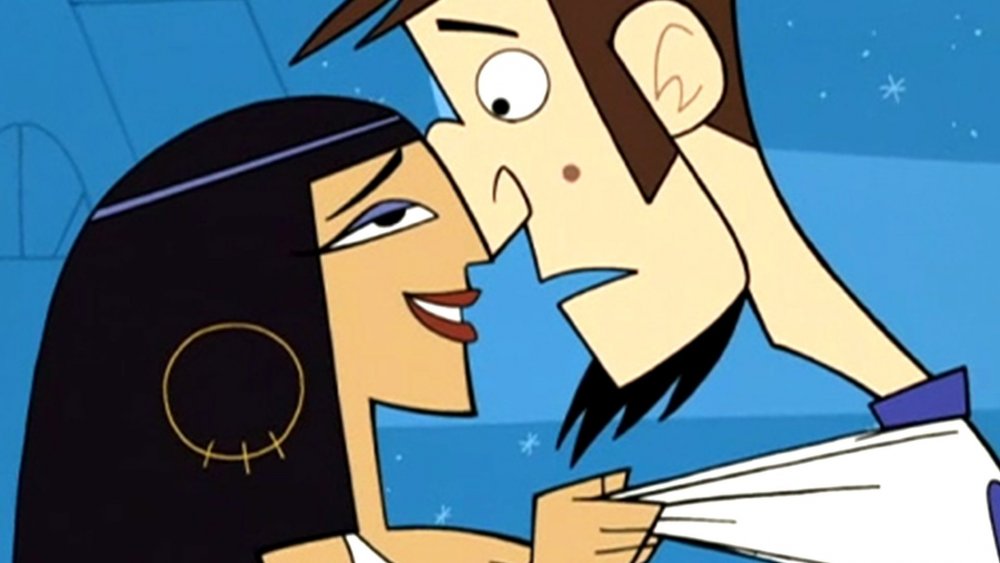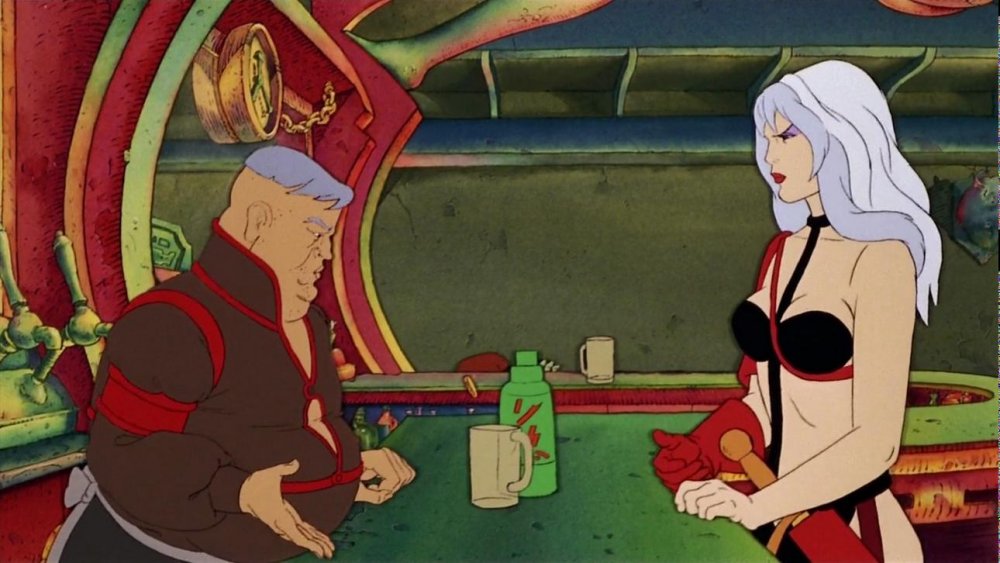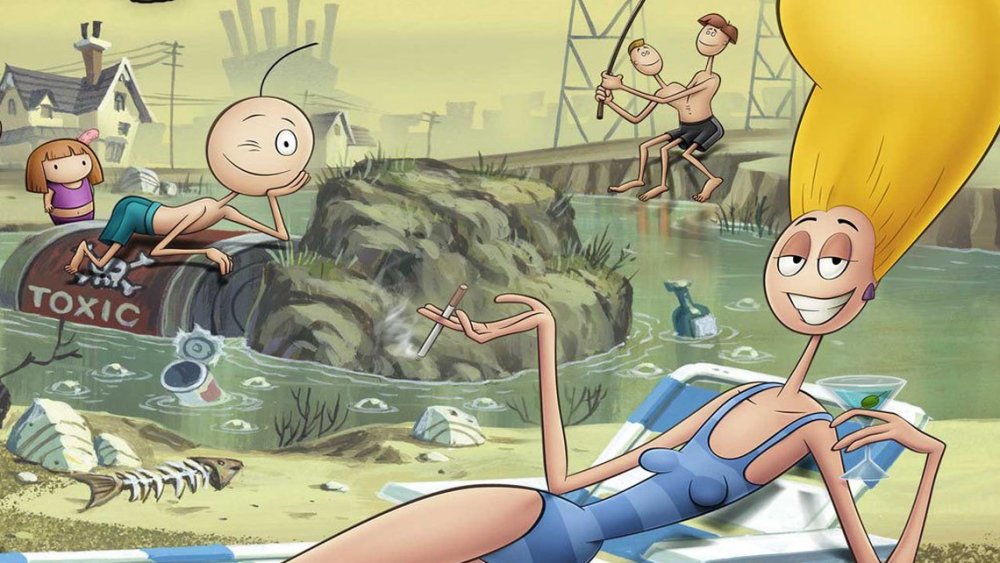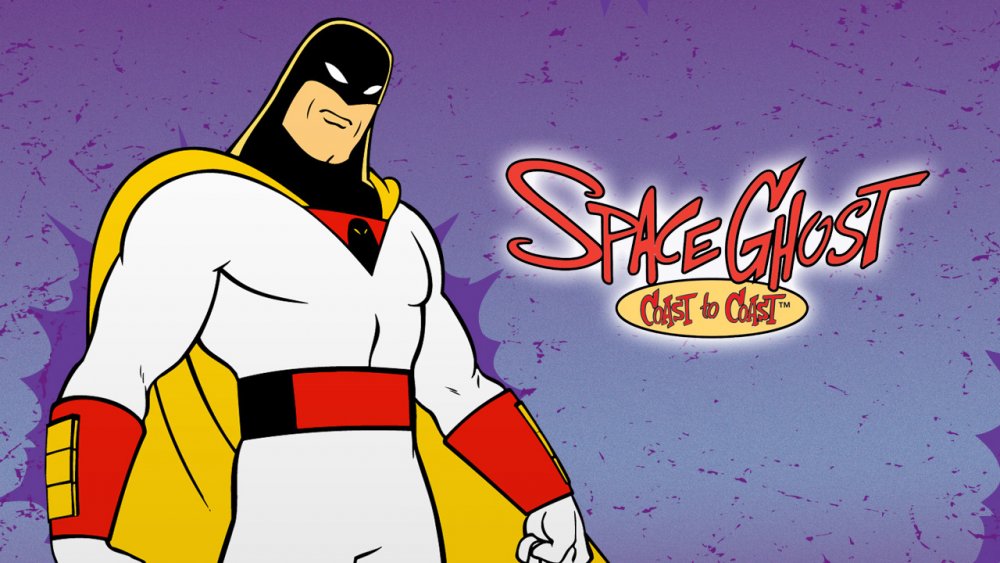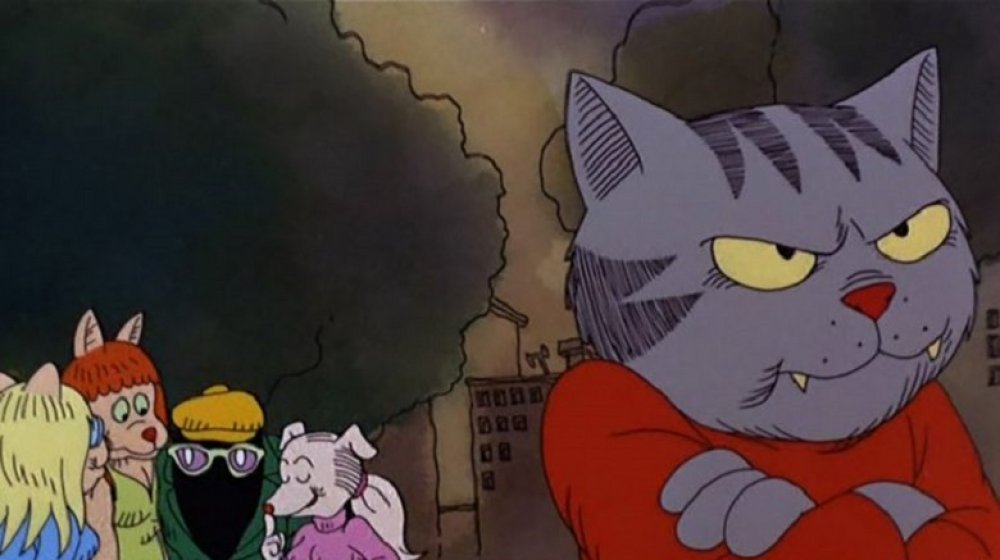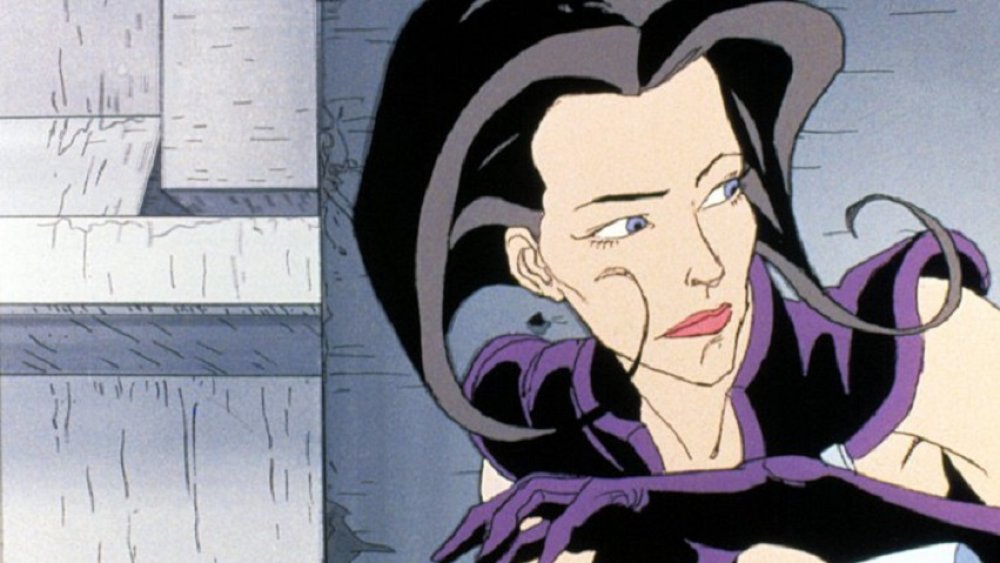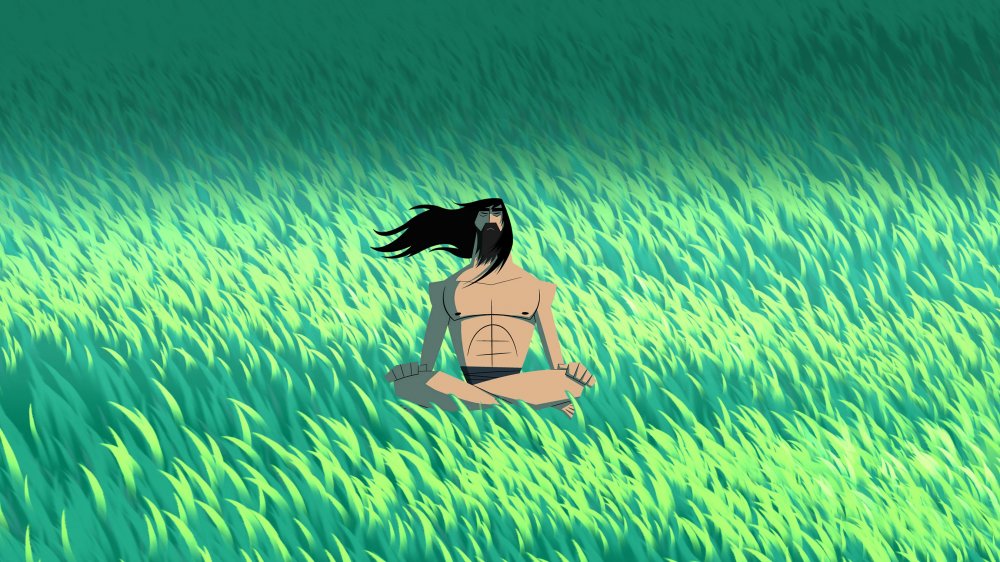Cartoons You Should Never Watch In Front Of Your Kids
Today's children have an absolute wealth of animated stories to choose from. Fantasy adventures like She-Ra and Steven Universe combine tender coming-of-age stories with thrilling heroics. High-energy comedies like Teen Titans Go! carry on the proud tradition of Warner Brothers wackiness. And then there's a whole host of Studio Ghibli movies. Modern animation proves that "kids stuff" can be just as good as anything else, and that there is, in fact, no reason why it shouldn't be.
But animation is a vast and varied landscape. Though it has, particularly in the West, been associated with children, there's always been a thriving world of animation aimed at adults. Some of it is shockingly dark, some of it explicitly sexual, and quite a lot of it is groundbreakingly good. But it all has one important thing in common: It's absolutely not for kids. Which of these works are among the most important to keep from impressionable eyes? We're here to tell you ... and to remind you to make sure your parental controls are up-to-date before you check them out.
Cool World definitely isn't for children
So there's a movie that's roughly 30 years old, about a world inhabited by live-action humans and animated cartoon characters. Much of it takes place in a stylized, somewhat seedy vision of 1940s America, full of private detectives, small-time hustlers, and gorgeous dames concealing complex agendas. Tension seethes between the humans and the cartoons, and a reckoning is imminent. Luckily, an unlikely partnership between two people from both sides emerges, and the day is saved for human and cartoon alike.
Who Framed Roger Rabbit, you presume? Wrong. We're talking about Cool World, which, despite its many similarities to the 1988 Disney classic, is distinguished by one massive difference. It is very much not for kids. Though it too tells the story of a down-on-his-luck dude inhabiting an animated landscape, the titular Cool World tempts him with all manner of R-rated debauchery, most prominently in the form of femme fatale Holli Would. An animated Aphrodite, she longs to become a live-action "noid," a process she accomplishes by sleeping with our human protagonist. You might think Jessica Rabbit was raunchy, but she has nothing on Holli, a character who wants to become human in large part to experience what human women feel when they "do it with a man." If you're looking to share a groundbreaking fusion of live-action and animation with your kids, stick to the denizens of Toontown, even with Jessica Rabbit's sordid games of pattycake.
Stripperella isn't what you'd call a kid-friendly cartoon
You can't talk about superheroes with talking about Stan Lee. Marvel's main man, he oversaw the creation of household names like Spider-Man, Black Panther, and the Hulk. He reshaped the tone of the entire genre, and he lived to see the transition of his characters from the page to the screen dozens of times over. Of course, like any creator, not everything he made reached such heights of success. Sure, you've heard of the Fantastic Four, but you're probably less acquainted with Heroman. Yet omnipresent or obscure, a Stan Lee creation can generally be depended upon to entertain fans of all ages. Right?
Enter Stripperella. A Spike TV cartoon that debuted in 2003, the Pamela Anderson-helmed series is about as far from family friendly as any supherhero can get. Its titular heroine is one Erotica Jones (yes, really), an exotic dancer who moonlights as a superhero. Her foes include Dr. Caesarean, Pushy Galore, and Queen Clitoris. Her home base is called TenderLoins, and her brother is Chipperella, also a stripper-turned-superhero. Only 13 episodes were made, making the series more of a novelty than anything else. Still, as long as it's kept far away from any young Lee fans in your life, it's worth a peek. After all, what other creation brought together the likes of Stan Lee, Fabio, Mark Hamill, and Pamela Anderson?
Moral Orel might be animated, but it deals with some really dark stuff
The years have seen Adult Swim throw all manner of animated weirdness at the wall, just to see what sticks. There are outright success stories, a la Rick and Morty, The Venture Brothers, and other series that have made millions, changed the culture, and inspired imitators. And then there are the series like Moral Orel, a strange and sordid show that's impossible to imagine airing anywhere but within Adult Swim's sheltering embrace.
A stop-motion series from the mid-2000s, Moral Orel is a devastating deconstruction of mid-century Americana. Orel, our wide-eyed hero, is the sort of kid that just wants to do right by God and grow up to be like his dad. But three seasons' worth of dysfunction reveal that nothing in the seemingly pious town of Moralton is at it seems. His father drinks to stifle his disillusionment with life. His mother cleans obsessively to avoid having to parent. His pastor has lost all faith in God's love. Though this isn't, at heart, a hopeless story — Orel is even glimpsed as an adult, having healed from his family's abuse — it's an unsparingly bleak look at the cost of conformity. In this light, the purpose of the show's kid-friendly aesthetic becomes clear. Every moment of darkness is also a moment of exquisite tension between form and content. It's juxtaposition at its most precise ... just make sure to keep the box set on the highest shelf.
Only adults will appreciate a cartoon like Clone High
Cleopatra, Abraham Lincoln, and JFK walk into an American high school. But this isn't the set up to a truly bizarre joke. It's the premise of cult classic Clone High. Set in the fictional town of Exclamation, Clone High follows the traumas, triumphs, and many very-special-lessons a group of teens who happen to be clones of famous historical figures endure. As you might expect, they're part of a shadowy government experiment, but that matters a whole lot less than anti-drug assemblies, winter proms, and student elections.
Clone High's genius lies in its embrace of contrast. The clones, of course, struggle mightily to live up to their outsize reputations, as aware as the audience is of just how unimpressive they are when set beside their ancestors. But the central tension comes to fruition most deliciously in the show's commitment to parodying teen soaps. It's funny to watch Joan of Arc reborn as a sullen goth girl, but it's priceless to watch her learn a holiday lesson from a dear little ragamuffin who "may or may not be" Mandy Moore, preceded by a facsimile of the 1973 "A CBS Special Presentation" intro. Add in a diner called the Grassy Knoll, an adolescent JFK who wants you to know exactly how rock hard his abs are at all times, and a robotic reincarnation of Mr. Belvedere, and you get a cartoon as eccentric as it is hilarious.
You should never watch Heavy Metal in front of kids
Heavy Metal fans might scoff at the idea that their R-rated masterpiece, inspired by the even more infamously R-rated sci-fi/fantasy comics magazine, could be confused for something meant for kids. But someone less initiated could pretty easily pick up the movie and assume it would be a good fit for their dragon-loving, cheat code-memorizing, Lords of the Rings-Extended Edition-watching kid. An anthology of short, vivid stories taken from the magazine, Heavy Metal features all manner of barbarians, astronauts, and strange alien landscapes, luxuriating in a wealth of out-there stories too wild to bring to the screen on their own.
But for all the glowing green rocks and futuristic visions of New York present in the film, there are just as many buxom babes, cold-blooded murders, and inhalations of space cocaine. It's a movie devoted to the id of an adolescent boy, as wildly inventive as it is deeply lascivious, taking every opportunity it can to people its strange locales with curvaceous shieldmaidens, virgin sacrifices, and wicked (though sexually accessible) queens. If the mindset of a late-1970s middle schooler is one you can comfortably inhabit, Heavy Metal can be quite a lot of fun. Just make sure no curious onlooker is peeping over your shoulder at the scantily-clad exploits on screen.
The Oblongs might be a bit too disturbing for little ones
Adult animation suffers no lack of family-based sitcoms. Yet even within that crowded field, The Oblongs stands out as particularly bizarre — and particularly funny.The eponymous Oblongs hail from "the Valley," a place so polluted by the lavish living of the adjacent "Hills" that every member of the family is deformed. The show is, as you might've guessed, a razor-sharp critique of class disparity, but the show's heart is as much a part of the series as its satirical edge.
Protagonist Milo's family are absolute losers in the game of life, doomed by circumstances so beyond their control as to be almost mythic, but their love for each other endures against all odds. Sure, sister Susie has a mysterious growth, but she's still her daddy's favorite little tattletale. Yeah, Pickles, the matriarch, could stand to put down the martini glass once in a while, but she gave up her life of Hills privilege out of love for her limbless husband and has never once looked back. Though its gross-out humor might make it seem most in line with Family Guy, at heart, The Oblongs was an antecedent to Bob's Burgers, as it's the story of a family getting by, one polluted day at a time.
Space Ghost Coast to Coast is adult animation at its most absurd
Space Ghost Coast to Coast is one of those once-in-generation coalescences of nostalgia, satire, and sheer oddness. It's a talk show starring one of Hanna-Barbera's lesser-known heroes in which actual celebrities are interviewed. If anything, Space Ghost only grew more surreal with time — its success acting as a sort of springboard for some of the most peculiar work Adult Swim has ever aired — even when compared to strange successors like Tom Goes to the Mayor. That's how groundbreaking, stage-setting, and perfectly odd Space Ghost was (and honestly, we wouldn't mind if this iconic cartoon got a reboot).
It's also one of the shows on this list most easily mistaken by a kid for something aimed at them. Space Ghost doesn't pelt the viewer with violence or sex the way other entries on this list do, dwelling instead, with surreal calm, in a valley of the absurd. Early seasons see Space Ghost not quite cognizant of who his guests are or how the world works. (He assumes everyone is a superhero and asks about their powers.) Later seasons see him hock a shampoo that makes you smarter, afflicted by a curse that drives him to cannibalism, and saddled with terrible licensing deals. The show is a creative force of nature, responsible in large part for what would go on to become an entire generation of adult animation. Little ones will likely just be creeped out by its flights of dark fancy or given an entirely incorrect idea of Space Ghost's popularity as a conventional superhero.
Keep your kids away from Fritz the Cat
Generally speaking, the West has always seen cartoons as kid's stuff. Adult animation has certainly made gains — The Simpsons isn't exactly obscure — but even then, those gains have been largely within the sitcom genre. Movies have fared, if anything, worse. Every few years sees a raunchy comedy like Sausage Party emerge, but there's been little else for anyone interested in animation meant for those over 12. In fact, one could be forgiven for thinking even that micro-trend to be a recent one, likely extending no further back than a decade or two.
Yet that assumption is wrong by nearly 50 years, as 1972's Fritz the Cat isn't just an animated movie for adults. It was originally X-rated — the first animated film in the United States to be so. Adapted from the legendarily taboo work of cartoonist R. Crumb, Fritz the Cat follows the titular wannabe-poet on a journey through the free love era's deepest pits of hedonism. Though director Ralph Bakshi has correctly identified that Fritz the Cat is less shocking by today's standards, it's still pretty risque stuff. This is, after all, a movie in which an anthropomorphic cat engages in group sex, gets high, hides from the cops, and ends up on a motorcycle with a neo-Nazi rabbit. In isolation, however, the characters often look like the soft, cuddly sort of mascots one might find on school supplies. In his big red sweater, Fritz in particular is eye-catchingly cute ... and just as horrifically inappropriate for the crowd most anthropomorphic animal cartoons are for.
Aeon Flux is a bit edgier than Nickelodeon cartoons
Aeon Flux contains multitudes. Gnosticism, late-'90s clubwear, and techno-utopianism are all present within the slickly animated series, a show with a vision of the future that's as stylish as it is horrifying. The titular Aeon is an assassin, locked in an eternal war between the anarchic country of Monica and the ruthlessly ordered nation of Bregna. There's nowhere else to live upon the blighted earth of the far future, making Aeon's mission as crucial as it is pointless. Her world is one of extremes, emphasized by the show's boundary-pushing aesthetics. Aeon herself is so ludicrously sexualized that she goes entirely round the bend and ends up grotesque.
That purposefully off-putting style has its roots in animation of a very different sort — the kind for kids far too young for Aeon Flux. Creator Peter Chung cut his teeth working Rugrats, standard-bearer of the 1990s Nickelodeon's lumpen look. Indeed, Aeon looks startlingly natural when placed beside Tommy Pickles and cartoons like As Told By Ginger, The Wild Thornberrys, and Aaahh!!! Real Monsters that carried on its aesthetic legacy. From an animation nerd point of view, this is a fascinating bit of connective tissue between unlikely works of art. But for anyone in charge of making sure kids don't confuse a BDSM-inflected spy thriller with the playpen-bound adventures of a band of early-'90s toddlers, it's to be noted with care.
The fifth season of Samurai Jack is probably too intense for kids
Genndy Tartakovsky's neon-limned tale of a time-displaced samurai was one of the coolest things a kid in 2001 could watch. And indeed, it could be watched by kids. While robots bleeding oil and ravers with pacifiers hinted at violent films and drug-soaked parties, respectively, Jack only ever alluded to these inspirations, borrowing their outlaw cool without portraying the actual law-breaking at hand. What resulted was a landmark achievement so beloved that it was given a chance to end its story properly, 13 years after it went off the air.
Thus was born Samurai Jack's fifth season, which aired in 2017. Jack's audience had grown up in the intervening years, and the show honored that by making a conclusive season for the adults they were, instead of the children they'd been. This isn't to say Samurai Jack shifted tone entirely. One can imagine a well-adjusted 12-year-old who loves the first four seasons being judged mature enough to view it by his parents. But still, the Jack revival's TV-14 rating is earned. Blood flows thickly, assassins are impaled upon spears, and there are brief implications of sexuality. As it stands now, young fans of Samurai Jack can enjoy the first four seasons to their heart's content, but they should have an adult judge whether or not they're ready for the final installment. After all, it's worth the wait, whether that's 13 years or only one or two, advised by a savvy parent.
